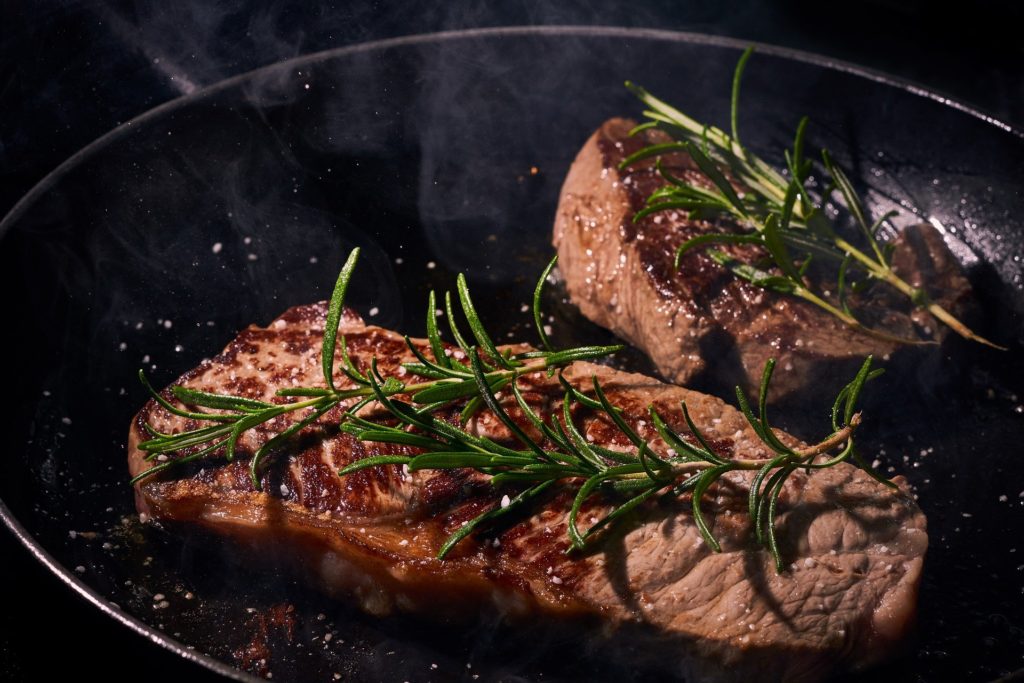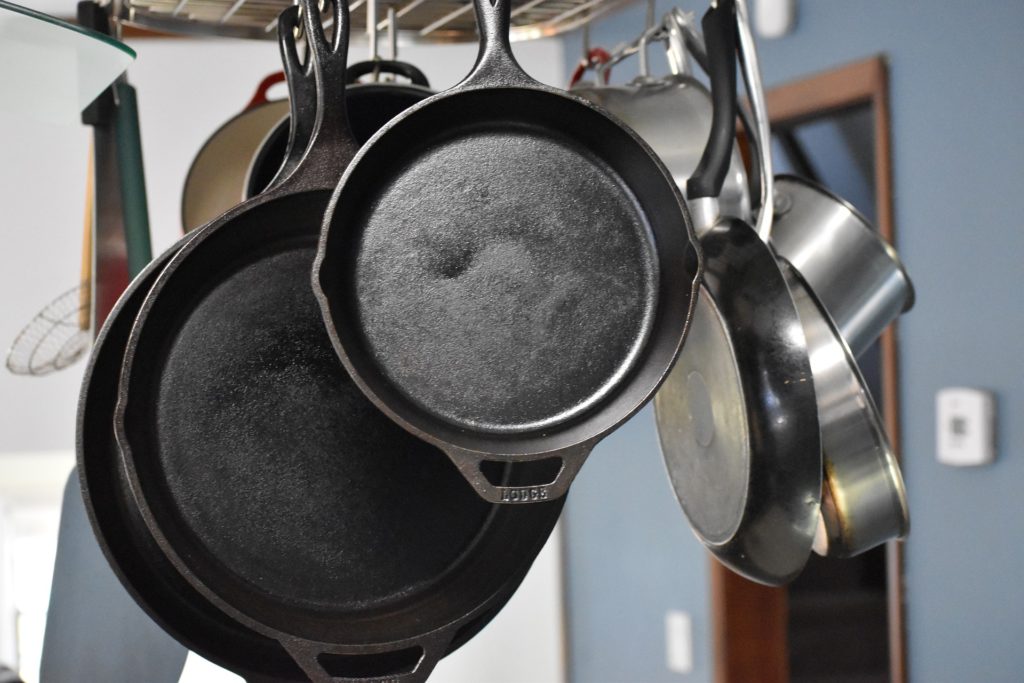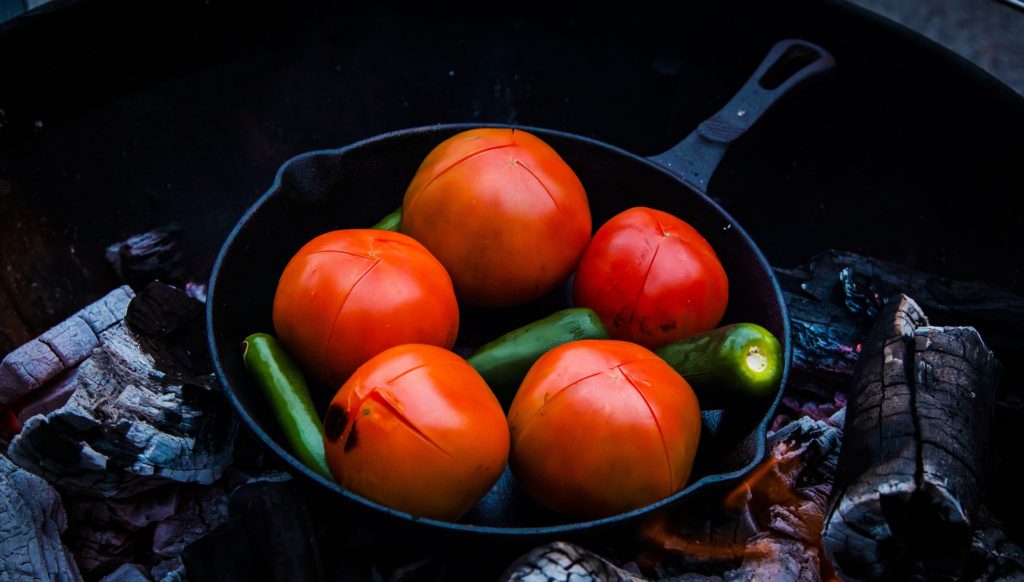What is a grill pan?
A grill pan is a heavy frying pan with a series of parallel ridges or ‘grill lines’. These lines are usually separated by a width of around 1cm and are about 0.5cm high.
Why do I need a grill pan when I already have a frying pan?
Whilst the flat, level surface of a regular frying pan is great for breakfast cooking, such as bacon, pancakes, and French toast, I will always reach for my grill pan at dinner.
The ridges of a grill pan allow the natural oils to drip away from meats, fish and chicken just as if they were being cooked on a chargrill. The juices collect below the ridges. This means that I can cook several different items in the pan simultaneously, confident that they will all still retain their individual flavours. Plus – only one pan to wash up at the end!
My grill pan enables me to cook healthy food with a smoky, chargrilled taste, not to mention those lovely looking blackened grill markings that you get from the BBQ. After all, we all eat with our eyes first!

How do I use it?
Grill pans are very simple to use. They are made with robust metals and can withstand medium-high heat.
Before you start grilling, the pan simply needs to be warmed on top of the stove. You do not need to use any oil as it will cause the pan to smoke. The natural juices from the cooking process will be enough to prevent meats from sticking, although I do like to brush or spray a little oil onto vegetables before grilling.
Next, you simply lay your ingredients across the ridges and let the pan do the work.
Don’t forget your lines
I always arrange my food when grilling so that it points slightly at an angle from the vertical ridges and will only flip it over when it slides away easily from the pan. That way I can be certain of achieving those fantastic cross-hatched lines that always make food look delicious!
Have a look at these great looking chicken breasts cooked on a grill pan:
Which one is best for my gas stove?
Whilst most grill pans can be used on a variety of cooking surfaces from electric, ceramic and gas right through to induction hobs and even campfires in certain cases, there are a couple of things to remember when buying a grill pan.
To begin with, I would recommend a dark coloured or black pan. Whilst you will undoubtedly come across many brightly coloured options in your search, remember that the flames from the hob can discolour the outside of these lighter pans after only a few uses.
I would also advise choosing a pan made from robust material such as cast iron or anodized aluminium to withstand the direct flame best. Plus, pans made from such materials tend to distribute heat evenly, enabling you to better produce evenly cooked food.
With care and regular maintenance, such pans will certainly outlast the cheaper stainless steel options on the market. A well-seasoned cast-iron pan, if it’s looked after properly, will be able to be passed down to the next generation of little chefs!

What is a ‘seasoned’ cast iron grill pan?
Cast iron grill pans are, in effect, large slabs of iron moulded into the shape of cookware. It is a perfect metal to use for a grill pan as the ridges can be cast as part of the actual pan itself.
I am always careful with cast iron as it is highly reactive, which means it can rust within minutes if not properly cared for.
The solution to this is proper seasoning (and I’m not talking about the salt and pepper flavours with which we are all so familiar!)
When used about a grill pan, the phrase’ seasoning’ refers to a protective surface coat of oils that bond to the pan as it is heated.
The more you cook with the pan, the more you will see a dark, plastic-like outer skin developing. This results from many thin layers of fats being heated on the cast iron, which mould themselves into a type of plastic.
These layers serve to protect the metal and help to stop the food from sticking to the hot surface.
Whilst you will find that many such pans will arrive with a degree of pre-seasoning, I would certainly recommend bonding an additional layer or two before using any of them. For more information on how to do this, click here.

